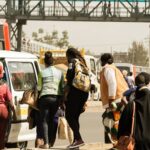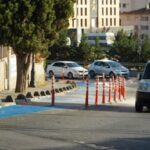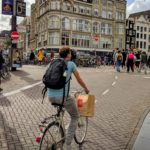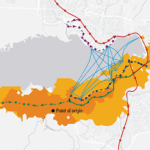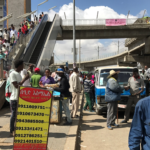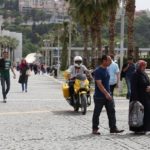Posts tagged with 'WRI Türkiye Sustainable Cities'
In Istanbul’s Caferağa neighborhood, WRI Türkiye led a community-driven initiative to create a more sustainable, inclusive and livable urban environment. From April 2023 to July 2024, the Livable Caferağa project worked closely with residents to understand the neighborhood’s challenges around overcrowding, ...

Istanbul’s Caferağa neighborhood has a longstanding reputation for its cultural richness and historic charm. Quaint cafes, restaurants and bars line the sidewalks. A thriving arts scene draws an eclectic crowd. More than 2.3 million visitors daily flock to the district ...

For a woman living in an African city, public transport can be a daunting experience. Women usually plan their trips in advance, and consider a multitude of factors before setting out: What is the safest way to reach the bus ...

Although it is widely recognized that gender disparities are echoed in the design and operation of urban transportation systems, gender-responsive transportation planning is still in its early stages. Drawing from the TOPUK project, which stands for “Women Accessing Public Transport,” ...

For decades, urban transportation policy and practitioners have favored a model of analysis that prioritizes increasing the speed of vehicles and the time saved for people as a result. While this may make sense on an intuitive level, it is ...

Metropolitan areas around the world struggle with the same problem: More people means more traffic. If the majority of residents and workers use private vehicles, this leads to more congestion and emissions, more road crashes, lower air quality and therefore ...

For many, the first thought that comes to mind about the Netherlands is crowded bicycle racks and bike-savvy commuters. The country has set the global standard for good practices in bike policy, infrastructure and engagement to make cycling a safe ...

The previous Map of the Month showed the power of accessibility data – comparing average travel time to different services in Mexico City – as a proxy to understand inequality in cities. But similar analyses can also help us to ...

A city without buildings is simply not a city. And yet when it comes to climate action, buildings tend to take a back seat to transport, energy production and industry. Making buildings more energy-efficient is the cheapest way to reduce ...

The diverse economic, social and physical benefits of bicycling are no secret, yet many cities are hesitant to better accommodate growing numbers of bicycles on their streets. In October, WRI Turkey Sustainable Cities organized a workshop with representatives from 16 ...

Dadalas, donfos, matatus, trotros, car rapides, minibus-taxis – whatever you call the on-demand minivan services that are so ubiquitous in many African cities, you can’t argue with their dominance. Such paratransit systems, as they are known in the transport world, ...

From space, cities can look like microscopic living organisms, with bright nodes of industrial and civic activity connected by circulating routes of traffic and transport. Some cities are taking this analogy to a new level with an “urban metabolic” approach ...

With 5,000 years of history and culture, the city of İzmir along the Ionian Coast is one of Turkey’s most remarkable urban areas. It’s a unique nexus between the past and present, with a variety of archaeological conservation sites but also Turkey’s ...

Addis Ababa’s light rail transit system (LRT), launched in October 2015 as the first LRT in sub-Saharan Africa, serves some 120,000 passengers a day. The LRT may help reduce travel times for some, and lead to a safer, cleaner transport ...

Modern technology has revolutionized the way people interact with urban mobility and their cities. People’s movements have become inextricably linked with technology, in particular their smartphones. Today’s technology can call a car service, track your movement, alert you when the ...












